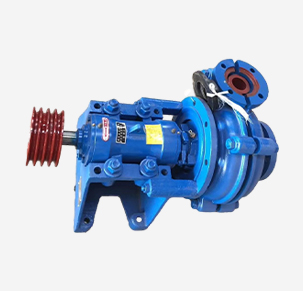Belarusian
- Afrikaans
- Albanian
- Amharic
- Arabic
- Armenian
- Azerbaijani
- Basque
- Belarusian
- Bengali
- Bosnian
- Bulgarian
- Catalan
- Cebuano
- Corsican
- Croatian
- Czech
- Danish
- Dutch
- English
- Esperanto
- Estonian
- Finnish
- French
- Frisian
- Galician
- Georgian
- German
- Greek
- Gujarati
- Haitian Creole
- hausa
- hawaiian
- Hebrew
- Hindi
- Miao
- Hungarian
- Icelandic
- igbo
- Indonesian
- irish
- Italian
- Japanese
- Javanese
- Kannada
- kazakh
- Khmer
- Rwandese
- Korean
- Kurdish
- Kyrgyz
- Lao
- Latin
- Latvian
- Lithuanian
- Luxembourgish
- Macedonian
- Malgashi
- Malay
- Malayalam
- Maltese
- Maori
- Marathi
- Mongolian
- Myanmar
- Nepali
- Norwegian
- Norwegian
- Occitan
- Pashto
- Persian
- Polish
- Portuguese
- Punjabi
- Romanian
- Russian
- Samoan
- Scottish Gaelic
- Serbian
- Sesotho
- Shona
- Sindhi
- Sinhala
- Slovak
- Slovenian
- Somali
- Spanish
- Sundanese
- Swahili
- Swedish
- Tagalog
- Tajik
- Tamil
- Tatar
- Telugu
- Thai
- Turkish
- Turkmen
- Ukrainian
- Urdu
- Uighur
- Uzbek
- Vietnamese
- Welsh
- Bantu
- Yiddish
- Yoruba
- Zulu
Telephone: +86 13120555503
Email: frank@cypump.com
Ліст . 30, 2024 04:19 Back to list
Efficient Slurry Screw Pump Design for Enhanced Fluid Transport and Handling Solutions
Understanding Slurry Screw Pumps
Slurry screw pumps are specialized types of pumps designed to handle abrasive, viscous, and solid-laden fluids, commonly referred to as slurries. This type of pump is widely utilized in various industries, including mining, construction, and wastewater treatment, where challenging fluid mixtures must be moved effectively. Given their unique design and functionality, slurry screw pumps offer several advantages over traditional pumping systems.
The Mechanism of Slurry Screw Pumps
At the heart of a slurry screw pump is its screw or helical impeller. Unlike standard centrifugal pumps, which rely on a rotating impeller to create fluid velocity, the design of a screw pump allows for a more efficient movement of slurries. The helical structure of the screw operates smoothly, providing a gradual and consistent flow while minimizing turbulence. This is particularly advantageous when dealing with materials that contain large solids or have non-Newtonian properties, as it reduces the risk of clogging and wear.
The operation of a slurry screw pump involves several key stages. As the screw rotates, it creates a vacuum that draws the slurry into the pump chamber. The design of the impeller then moves the slurry along the screw channel toward the discharge port. This method not only ensures continuous flow but also helps maintain the solids in suspension, preventing sedimentation and buildup within the pump.
Advantages of Slurry Screw Pumps
1. Efficiency in Handling Abrasive Materials Slurry screw pumps are built to withstand the wear and tear associated with pumping abrasive materials. The materials used in their construction often include hardened alloys and ceramics that enhance durability and extend the life of the pump.
2. Versatile Flow Rates One of the key features of slurry screw pumps is their ability to accommodate a wide range of flow rates. This versatility makes them suitable for various applications, from low-flow, high-viscosity tasks to high-flow situations involving thin slurries.
slurry screw pump

3. Reduced Maintenance Due to their robust design and lower operational complexity, slurry screw pumps typically require less maintenance compared to conventional pumping systems. Fewer moving parts mean less wear and tear, translating to reduced downtime and lower operational costs.
4. Gentle Handling of Solids The gradual movement of slurries within a screw pump ensures that solids are not subjected to excessive shear or turbulence. This characteristic is crucial when dealing with fragile materials, as it helps preserve their integrity.
5. Ability to Handle Viscous Fluids Slurry screw pumps excel in transferring highly viscous fluids that would be challenging for standard pumps. This makes them a preferred choice in industries where such substances are common.
Applications of Slurry Screw Pumps
The versatility of slurry screw pumps sees them applied in various sectors. In the mining industry, they are used to transport mined materials mixed with water, facilitating the separation of valuable minerals from waste. In construction, these pumps manage the movement of concrete slurries, while in wastewater treatment, they play a critical role in the transfer of sludge and other solid-laden fluids.
Furthermore, slurry screw pumps are integral in agricultural applications, particularly in the handling of slurry manure and nutrient-rich liquids, contributing to efficient waste management and the promotion of sustainable practices.
Conclusion
Slurry screw pumps represent a crucial innovation in fluid handling technology, particularly for industries dealing with abrasive, viscous, and solid-laden fluids. Their unique operational mechanism, combined with significant advantages such as efficiency, versatility, and reduced maintenance needs, makes them an indispensable tool in various sectors. As industries continue to evolve and demand more from their pumping solutions, slurry screw pumps will undoubtedly remain at the forefront of fluid transfer technology. By understanding their capabilities and applications, businesses can optimize their processes and enhance their operational efficiencies.
-
High-Performance Air Pumps for Sand & Gravel | Efficient Transport
NewsAug.03,2025
-
ISG Series Vertical Pipeline Pump - Chi Yuan Pumps Co., LTD.|Energy Efficiency, Corrosion Resistance
NewsAug.03,2025
-
ISG Series Pipeline Pump - Chi Yuan Pumps | Energy Efficiency&Compact Design
NewsAug.03,2025
-
ISG Series Vertical Pipeline Pump - Chi Yuan Pumps Co., LTD.|High Efficiency, Low Noise, Durable
NewsAug.02,2025
-
ISG Series Vertical Pipeline Pump - Chi Yuan Pumps | High Efficiency, Low Noise
NewsAug.02,2025
-
ISG Series Vertical Pipeline Pump- Chi Yuan Pumps Co., LTD.|High Efficiency&Compact Design
NewsAug.02,2025










